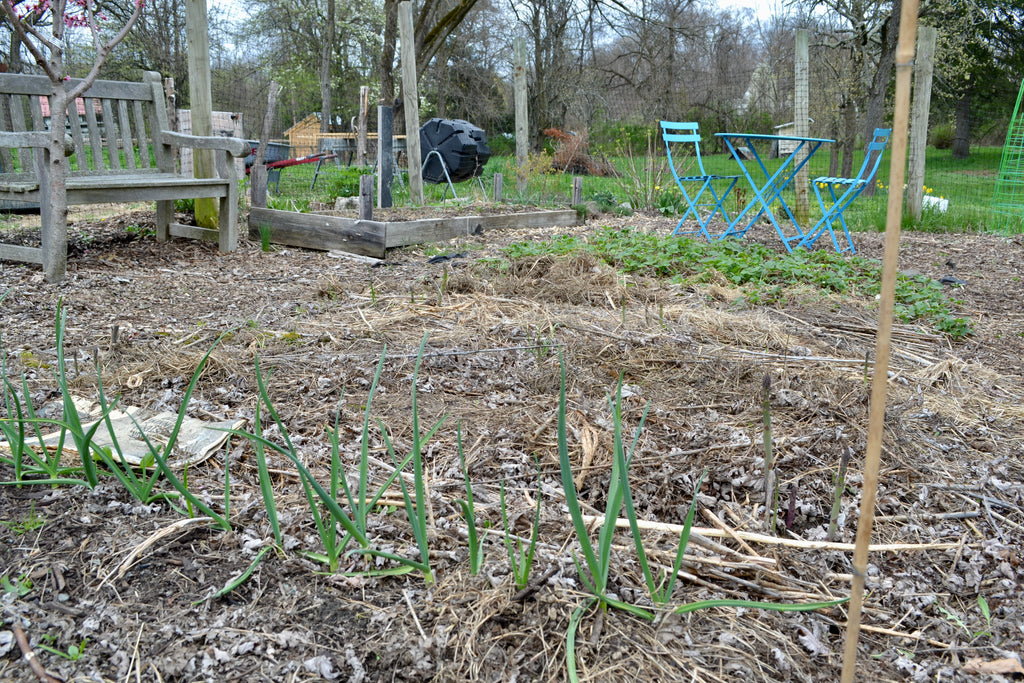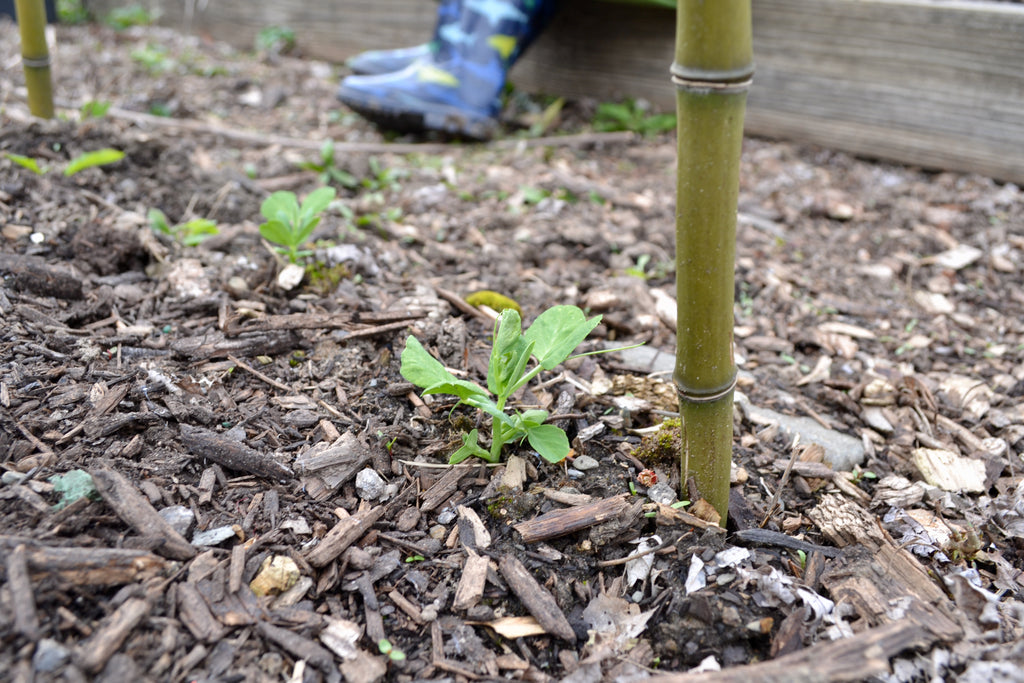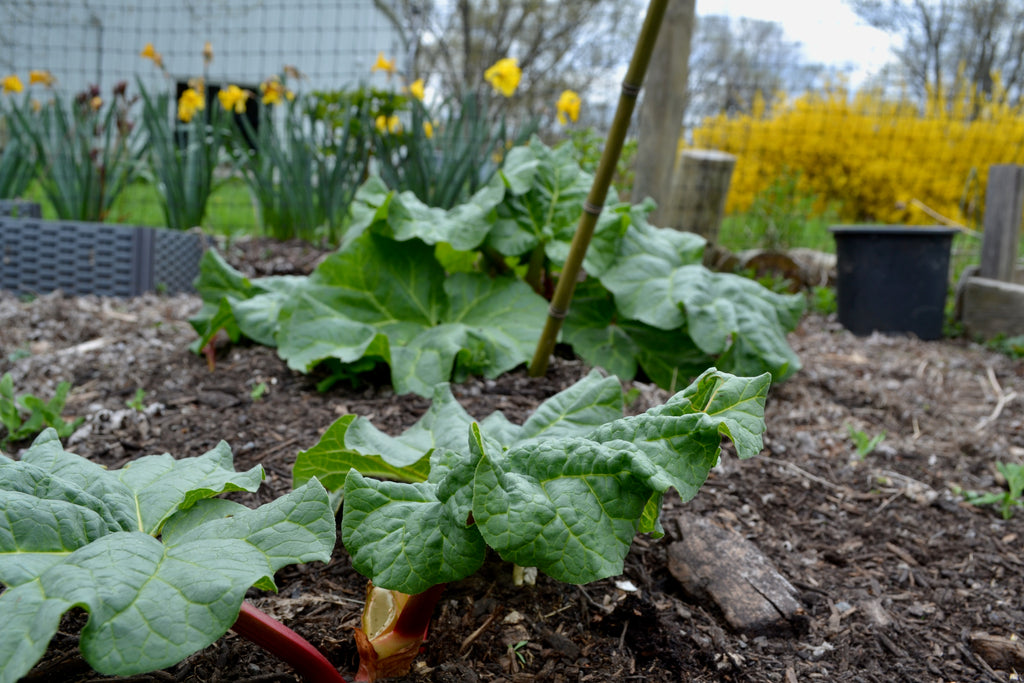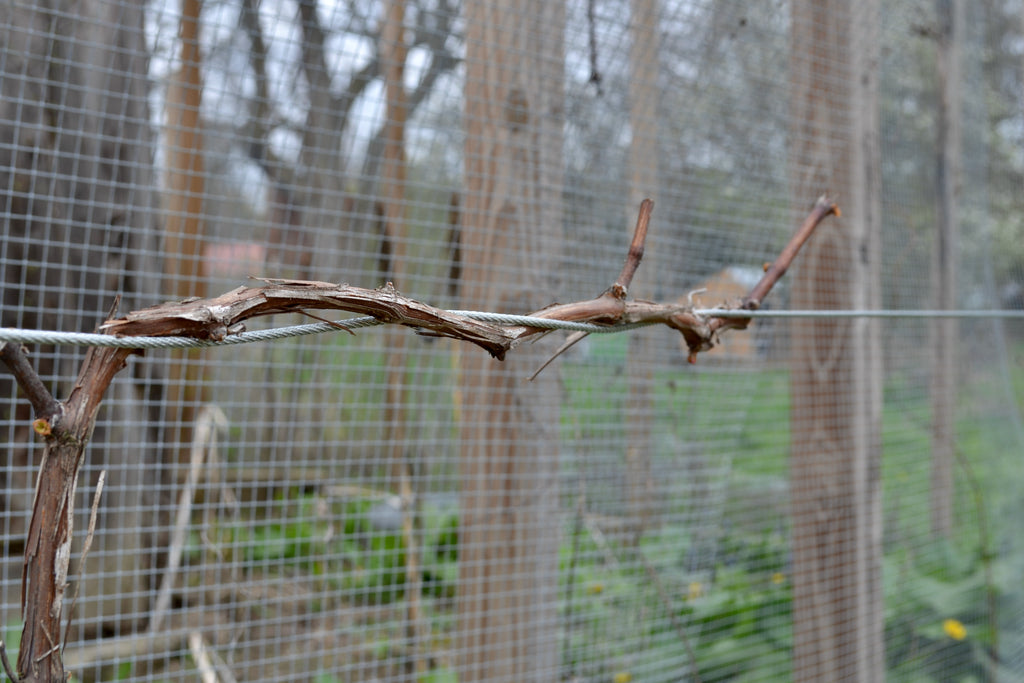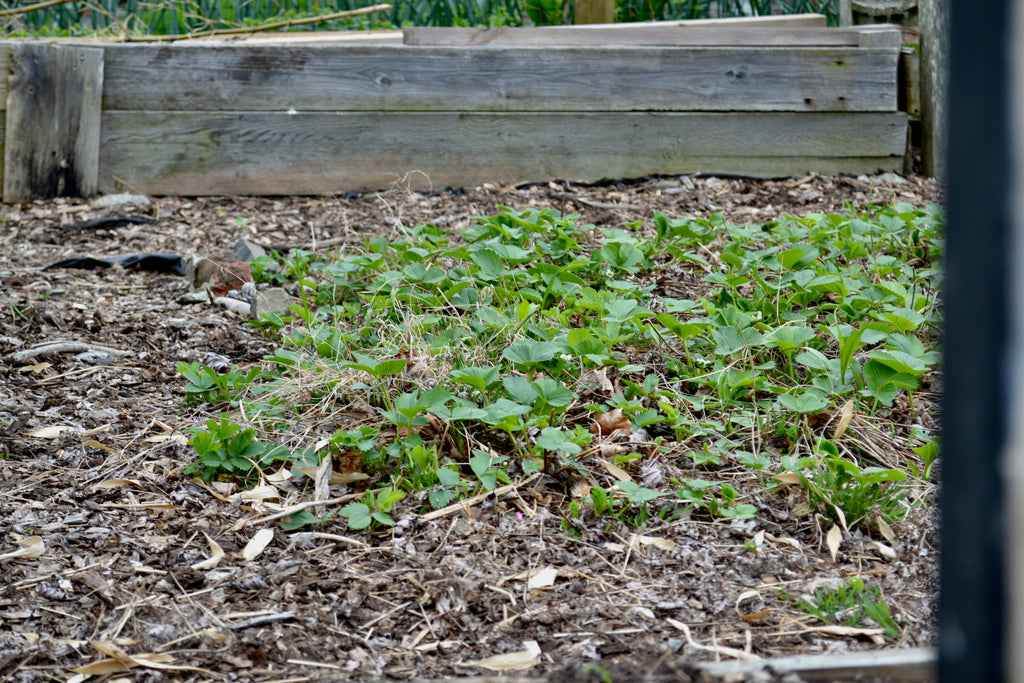"If it's raining the flowers are happy, and if it's sunny I'm happy. Either way I win."
I said that twice today. Both times a visitor to the store was bemoaning the non-committal cloud-cover. I don't like taking a sweater on or off every 10 minutes, but I do love the spring. More than any other season, I feel, it shows cumulative effort in stark terms. Bulbs planted over many years layer generation over generation, splitting and dividing across the yard. Snowdrops give way to aconites then to daffodils and finally tulips.
As the daffodils cease their show, the peonies stand upright, asking to take their place. Rudbeckia and Echinacea nip at their heels, as does the columbine. When the two small peach trees in our garden bloom, I go looking on the grape vines for new growth. Asparagus pushes its way skyward, harvested with a gentle snap. Rhubarb tries to bolt early, and we nip it in the bud.
Weeds love this time of year too. Heather Grimes, a Hudson Valley landscape designer focused on native plants, recently pointed out that invasives take advantage of this season by growing faster than natives. They claim an unearned head-start, but at least that means you can spot them. In the garden, 'invasives' encompasses a broader definition: anything I deem to be unwanted wherever it's taken root.
So mugwort, golden rod, and ground ivy are out, as are the seemingly endless raspberry runners.
Note to other gardeners: Planting raspberries in the middle of your garden is not advisable if you don't want to go to battle every season against their encroachment on, well, everything.
Below are some moments in time, taken in mid-April 2024. The garden didn't look like this the day before, and changed again the day after. But this is what gardens are wont to do. They refuse to be frozen. They reject stasis.
Today, April 28th, I planted a trilogy mix of green beans from Johnny's between some young strawberry plants. Each will protect each other, or so the theory goes. Google didn't tell me that. It did tell me that I probably shouldn't have planted a row of garlic so close to the asparagus, but I learned so after the fact. Most of the lessons we learn take a season, not a search. And I like it that way.
Garlic in the foreground next to its apparent nemesis, asparagus. Strawberries run rampant behind. Tiny spinach seedlings make a showing, too, bottom right.
